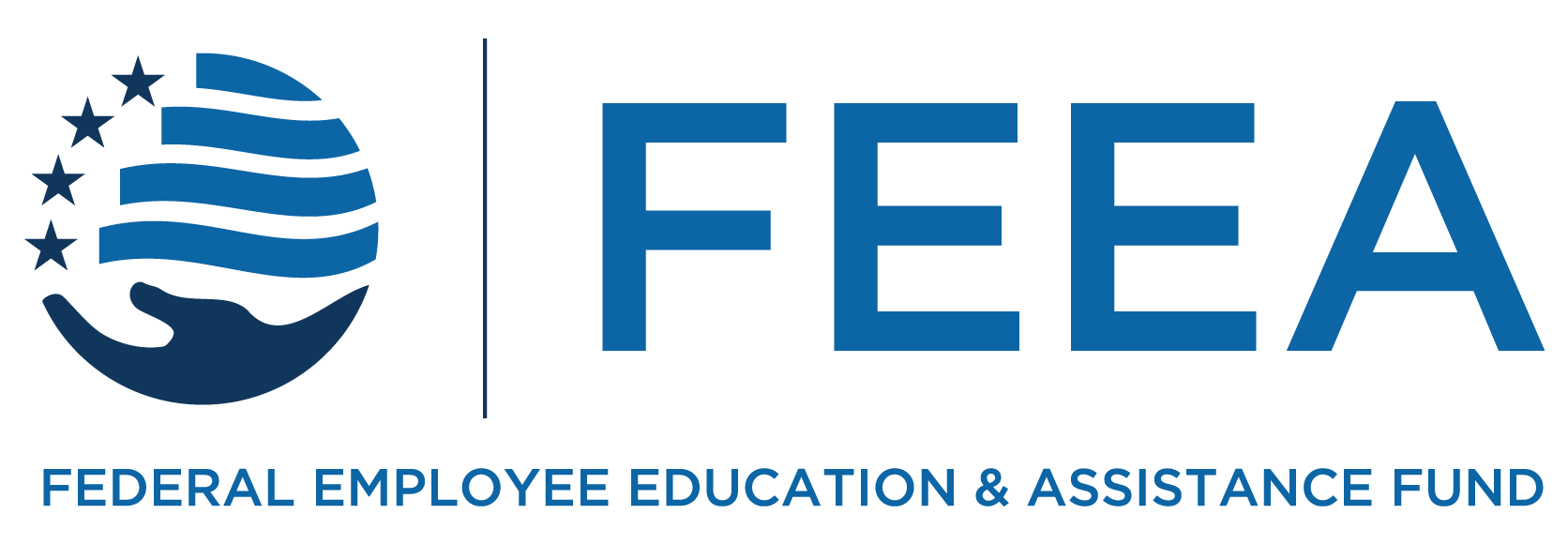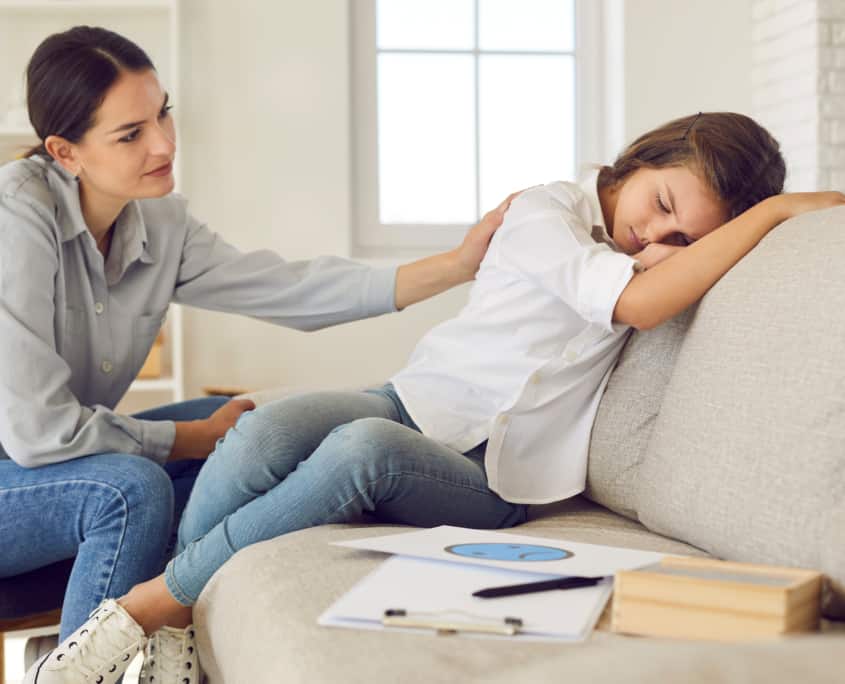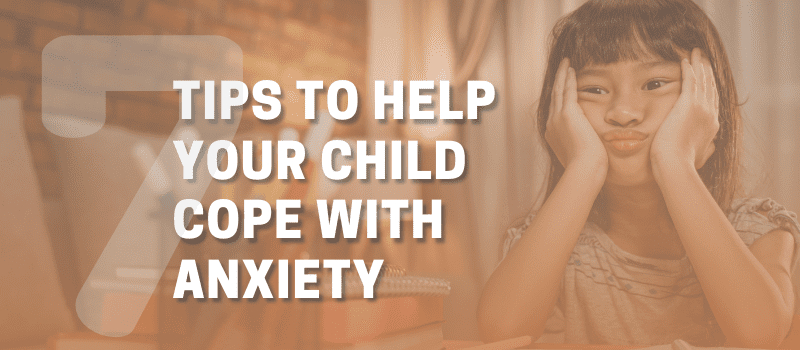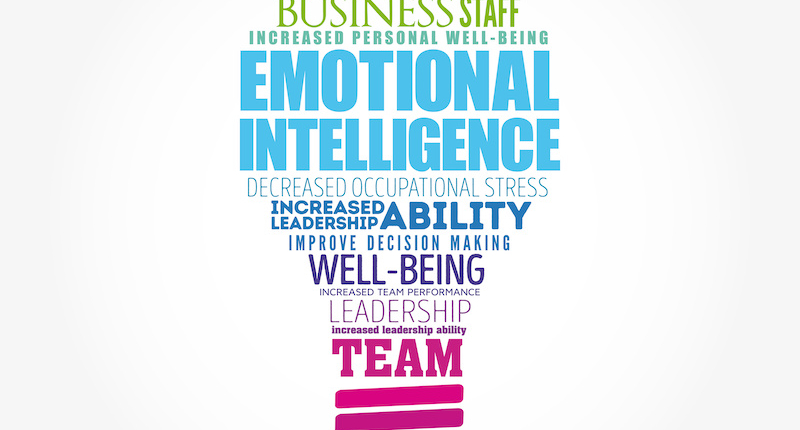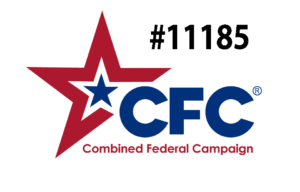The start of the school year can bring about anxiety for kids. Our expert shares tips to help guide you through the back-to-school jitters and how you can help your kid cope with anxious feelings.
What does anxiety look like for your child?
Anxiety can look very different, depending on the child and the situation. Anxiety is a response to an actual or perceived threat, and it motivates our bodies to protect ourselves from the real or imagined threat by fighting, fleeing, or freezing. We feel a fear or anxiety response because our blood and energy resources are moving around to prepare us to react to the threat, and we tend to feel this in our bodies in some way, such as with a racing heart, upset stomach, breath holding, muscle tension, dizziness, sweating, or feeling like we are shutting down. We can also feel anxiety and have this physical response when we experience or think about something in the past that has posed a threat to us.
There is a second part of anxiety that happens when we feel fear about something that hasn’t happened yet; this is called worry. With worry, we can feel scared, angry or sad about feeling anxious, or our bodies can start preparing to fight or escape a threat that we think could possibly happen in the future. These thoughts, feelings, and sensations, in our minds and bodies can be very uncomfortable and scary, and we can all cope with them in different ways.
Your child may show obvious signs of feeling anxious, such as verbalizing fear or showing signs of anxiety in the ton or their voice and their body language. Although, it is also important to remember that anxiety can also look like other things, such as avoidance of certain tasks, people or situations that the child associates with a real or perceived threat. In addition, it may also manifest as physical symptoms such as an upset stomach, or other emotions like anger or sadness.
Are anxious feelings normal for children and teens in the new school year?
It is completely normal for children, teens and adults to feel anxious during the new school year! Any new experience brings a degree of uncertainty and the unknown, which can cause feelings of stress, fear, apprehension, overwhelm, and worry.
However, stress is not always a “bad” thing; it is simply the way we respond and adapt to new or unexpected changes, challenges or opportunities. We often experience some of the same physiological sensations that we do during feelings of anxiety when we feel excitement, curiosity, and positive anticipation in new situations. Both are stress responses; the difference lies in how we label, judge and perceive the situation, and this can be shaped by factors like our trauma history, the way we process sensory information, and our physical and mental states.
What are some ways to start the conversation with my child?
The best way to start a conversation about starting the new school year is to build connection and empathy by sharing your own experiences. By sharing how you have felt when you started something new (anxious, excited, nervous, curious), along with the physical sensations you experienced (sweaty hands, queasy stomach, a need to move around, pounding heart, and so on), your child will not feel alone in their emotions.
You can also model coping strategies by sharing with your child what you did to cope with the feelings (e.g., took deep breaths, paced around).
Most importantly, you can emphasize how all of these feelings like anxiety and worry are impermanent, meaning they do not last forever! All of our feelings are constantly changing, moving around and co-existing with each other.
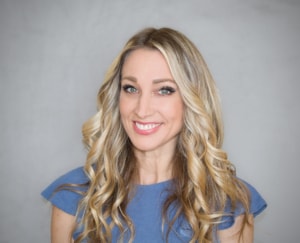
Dr. Monica Jackman is an occupational therapist and mother of four. She holds a Bachelor of Science degree and a Master of Health Science degree from the University of Florida and a Doctorate in Occupational Therapy from Chatham University. Monica has authored research papers and book chapters on topics including mindful engagement, the mindful engagement support model, occupational therapy in mental health, and teaching mindfulness to children, and has developed and implemented mindfulness-based training programs for caregivers, preschoolers, and school-aged children. She is the creator of the Mindful Engagement Support Model of Treatment, the OpenMind Preschool and Kindergarten Program, co-author of the OpenMind Elementary and Middle School Program, and the author of the Mindfulness for Preschool and Kindergarten, published by New Harbinger in August 2022. She has lectured nationally and internationally on mindfulness and social emotional learning interventions for children and adults.
You can follow Dr. Monica on Instagram @OpenMindWithDrMonica or on Facebook @LittleLotusTherapy.
Would you like to receive more information like this when it comes out? Sign up for the FEEA newsletter.
Would you like to reprint this piece in your agency human resource, federal employee association, or union local newsletter? You can do so at no cost by contacting admin@feea.org with your request.
The information provided in this piece is for your convenience and informational purposes only and not to be construed as professional advice. FEEA and its coauthors and sponsors are not liable for any losses or damages related to actions or failure to act with regard to the content in this piece.
